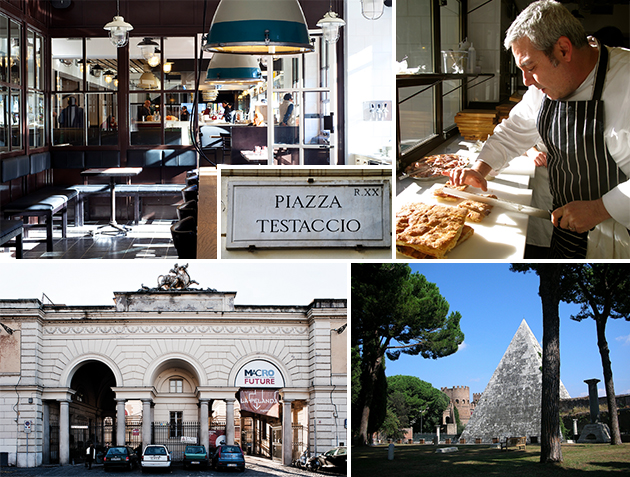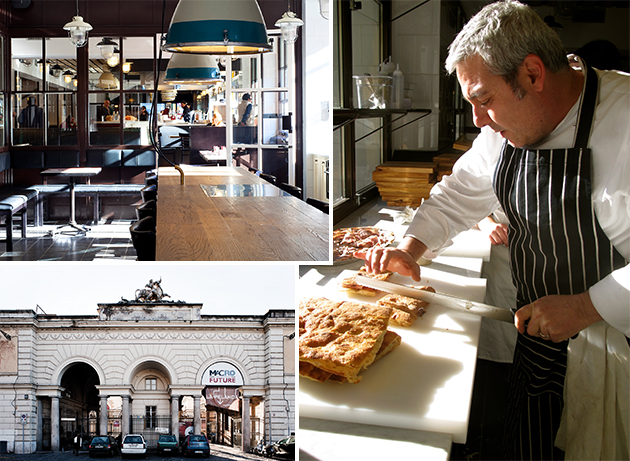
From 1st-century port to 21st-century hipster hangout, the tiny Testaccio neighborhood just south of Rome’s historic center is steadfastly holding ground as the go-to place for the triple-threat Eternal City experience — food, culture and antiquity. Testaccio sits on nearly two millennia of history and has undergone several Roman renaissances. Originally an ancient emporium and dump (its name comes from the existent “mountain” of ancient amphorae shards), Testaccio has had reincarnations as a blue-collar neighborhood, nightlife destination and, most recently, cultural mecca.
Culinistas head to the neighborhood for its rich food scene of markets and stores, such as noted delicatessen Volpetti and spice shop Emporio delle Spezie. There are local weekday and weekend markets, too. Recently, the area has upgraded its outdoor market to accompany the popular weekend farmers market and the socially conscious Città dell’Altra Economia, a “city” within the neighborhood devoted to organic and fair-trade products. Eating establishments like Da Remo Pizzeria, Roman cuisine specialist Felice a Testaccio and innovative over-the-counter pizzeria 00100 have long since received international recognition, so it is worth mentioning that the brand-new Eataly (Mario Batali, Joe Bastianich and Lidia Bastianich made the Italian-only food market a household name with their New York outpost, but the brand was founded by Oscar Farinetti in Turin) and locavore restaurant Porto Fluviale are just around the corner.
History buffs happily note that almost every phase of Roman history is visible in Testaccio, whether it is the looming 1st-century B.C. pyramid shading the late-18th-century Protestant Cemetery (where John Keats and Percy Bysshe Shelley reside), the active archaeological excavation around the corner from Da Remo or the Fascist-era Palazzo delle Poste (post office).
Testaccio’s most interesting, but not surprising, development is as a contemporary art scene. The neighborhood has a solid history of in situ street art (pieces created where they’re shown) and is claiming stake in the art world with MACRO Testaccio and Fondazione Giuliani. MACRO Testaccio, the second hub of Rome’s Museum of Contemporary Art, occupies a turn-of-the-century slaughterhouse and boasts late-night hours, special events and the city’s most recent monument, Big Bambù, the hundred-feet-plus-high climbable nest. The smaller Fondazione Giuliano, which focuses on three annual contemporary exhibitions of up-and-coming and established artists, welcomes Seb Patane’s solo installation “The Foreigners Stand Still” from April 20 to July 19.
Right now, Testaccio is the whole package — culture, food and history — neatly bundled up between the Tiber River and 3rd-century wall.
Photos courtesy of Portofluviale and Erica Firpo

